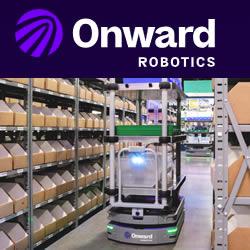OpenROV Trident Pre-orders
America, Regulate Drones Now or Get Left Behind
Google Puts Boston Dynamics Up for Sale in Robotics Retreat
Robotics expert: Self-driving cars not ready for deployment
Image Processing 101
18 months since the toolkit's release, soft robotics is flying
Carnegie Mellon robotics selected for research projects totaling more than $11 million
Artificial Skin That Glows, Stretches Could Change Robotics?
Postdoc's Trump Twitterbot Uses AI To Train Itself On Transcripts From Trump Speeches
How This New Drone Can Track Your Every Move
Would you buy meat from a robot butcher?
Mercedes Boots Robots From the Production Line:
Atlas, The Next Generation
Roving robot 'ground drones' take to streets for deliveries
Republican-Leaning Cities Are At Greater Risk Of Job Automation
Records 1156 to 1170 of 1673
First | Previous | Next | Last
Featured Product

Onward Robotics - Meet Me Fulfillment Automation
Robotics and Automation - Featured Company

